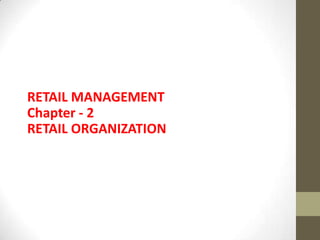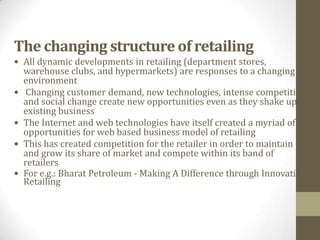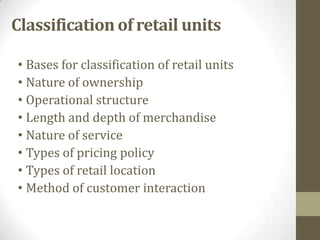The document discusses various theories of structural change in retailing including the wheel of retailing, dialectic process, and natural selection. It also covers different ways retailers can be classified such as by ownership, operational structure, merchandise offering, retail location, methods of customer interaction, and pricing policy. Examples are provided to illustrate concepts like the wheel of retailing and different retail formats.
































